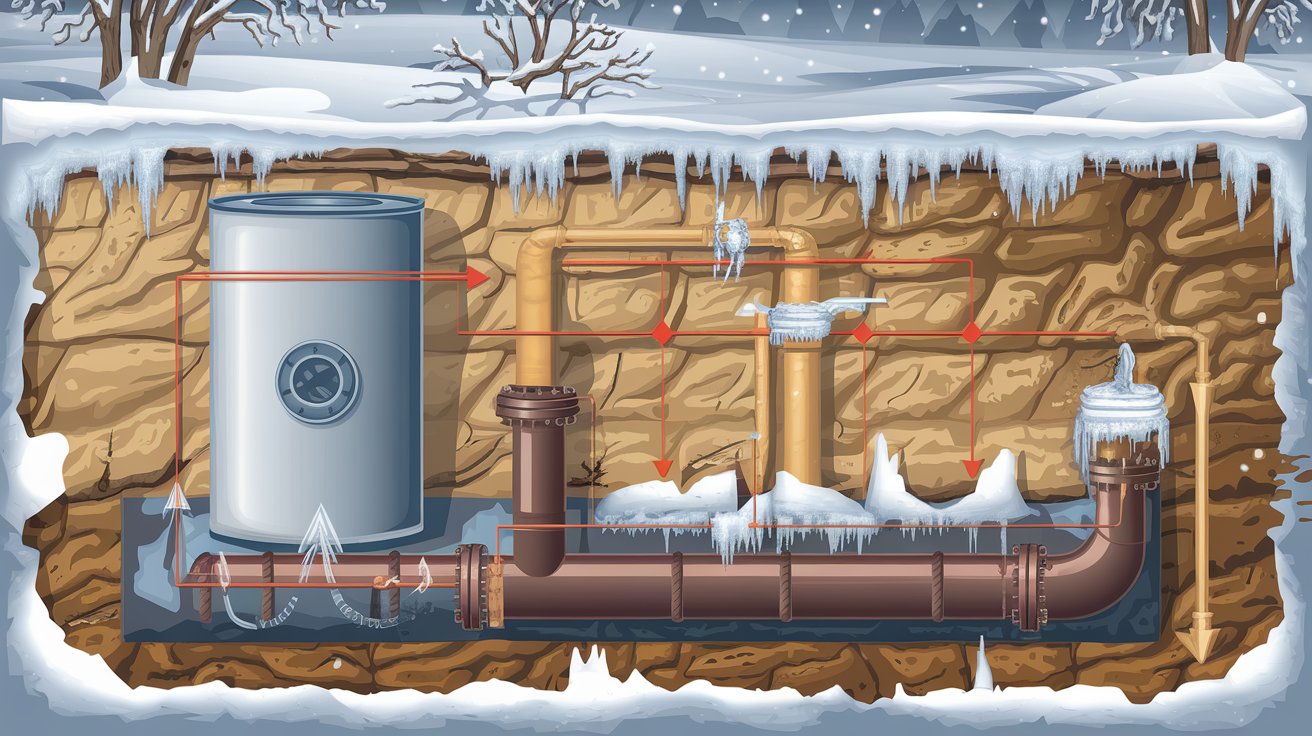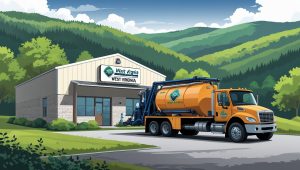Septic systems are essential for managing wastewater in homes not connected to municipal sewer systems. Understanding the signs of freezing in your septic system is crucial, especially during the cold winter months. When temperatures drop, the risk of freezing increases, which can lead to significant problems if not addressed promptly. This article will help you identify potential issues caused by freezing temperatures and provide guidance on how to prevent damage.
Table of Contents
- Understanding Your Septic System
- Components of a Septic System
- Signs of Freezing in Your Septic System
- Preventing Freezing in Your Septic System
- Tips for Insulating Your System
- What to Do If You Suspect Freezing
- Long-Term Solutions for Winter Care
- Septifix
- Septic Permit Links by State
Understanding Your Septic System
A septic system consists of a tank and a drain field that treat household wastewater. The tank collects waste, allowing solids to settle at the bottom while liquids flow into the drain field for further treatment. Regular maintenance is vital to ensure its functionality. Neglecting your system can lead to severe problems, particularly in winter when temperatures drop significantly.
Components of a Septic System
- Septic Tank: This underground tank is where solid waste settles and anaerobic bacteria break it down.
- Drain Field: Also known as a leach field, this area allows treated water to percolate into the soil, where it is further purified.
- Pipes: These connect your home’s plumbing to the septic tank and drain field.
Understanding these components is essential for recognizing how freezing can affect your system.
Signs of Freezing in Your Septic System
As temperatures plummet, certain indicators can signal that your septic system may be experiencing freezing issues. Here are some key signs to watch for:
Frozen Pipes
One of the first signs that your septic system may be freezing is a lack of water flow from faucets or toilets. If you notice that water isn’t draining properly or if you have no water at all, it could indicate frozen pipes. Pipes most at risk are those that run through unheated areas, such as basements or crawl spaces.
Slow Draining
If wastewater drains slowly or not at all, this may be another sign of freezing. Cold temperatures can cause ice to form within the pipes, obstructing flow. Slow drainage can lead to backups, which can be messy and costly to remedy.
Unusual Odors
A strong odor emanating from your drains can indicate that waste is not being processed correctly due to freezing conditions. This should be addressed immediately to prevent further complications. Odors may also suggest that waste has become trapped due to ice blockage.
Frost on Exposed Pipes
If you notice frost forming on exposed pipes outside your home or in uninsulated areas, this is a clear sign that freezing conditions are present. Frost indicates that the temperature around the pipes has dropped significantly, increasing the likelihood of ice formation inside.
Preventing Freezing in Your Septic System
Taking proactive measures can help prevent freezing issues before they arise.
Insulation Techniques
Insulating pipes and tanks can significantly reduce the risk of freezing. Use foam insulation or heat tape on exposed pipes, especially those leading outside. Insulation helps maintain a stable temperature around critical components of your septic system.
Tips for Insulating Your System
- Pipe Insulation: Wrap pipes with foam insulation sleeves or use heat tape designed for plumbing.
- Tank Insulation: If your septic tank is above ground or partially exposed, consider insulating it with foam boards.
- Seal Cracks: Inspect and seal any cracks in walls or foundations where cold air might enter and affect pipe temperatures.
Regular Maintenance
Conducting inspections before winter is essential. Ensure your system is functioning correctly and that there are no existing issues that could worsen with cold weather. Regular maintenance includes checking for leaks, ensuring proper drainage, and scheduling pumping as needed.
Recommended Maintenance Schedule
- Annual Inspection: Have a professional inspect your septic system annually.
- Pumping Schedule: Pump your septic tank every 3–5 years or as recommended based on usage.
- Winter Preparation: Before winter sets in, check all components for signs of wear or damage.
What to Do If You Suspect Freezing
If you suspect that parts of your septic system are frozen, take immediate action:
- Check for Visible Signs: Look for frost on pipes or unusual odors coming from drains.
- Open Cabinet Doors: Open cabinet doors under sinks to allow warm air circulation around plumbing.
- Let Faucets Drip: Allowing faucets to drip slightly can help keep water flowing and prevent freezing.
- Heat Tapes: Consider applying heat tape to vulnerable pipes during extreme cold spells.
If you cannot resolve the issue yourself or if problems persist, contact a professional plumber experienced with septic systems.
Long-Term Solutions for Winter Care
To prepare your septic system for winter:
Install a Heated Riser
If your tank is prone to freezing conditions, consider installing a heated riser that maintains warmth around the tank’s access point.
Regular Pumping and Inspections
Regular pumping every 3–5 years is recommended by the EPA . Keeping up with inspections ensures any potential issues are caught early before they escalate into larger problems.
Monitor Weather Conditions
Stay informed about weather forecasts during winter months. If extreme cold is predicted, take extra precautions such as additional insulation or monitoring water flow closely.
Conclusion
Recognizing the signs of freezing in your septic system can save you from costly repairs down the line. Regular maintenance and preventative measures are key during winter months. By insulating pipes, conducting annual inspections, and taking immediate action if you suspect freezing, you can protect your septic system from winter-related damage. Need help with septic tank maintenance? Check out our product reviews! By following these guidelines, homeowners can ensure their septic systems remain functional throughout the winter season while minimizing risks associated with freezing temperatures. Incorporating these strategies will not only enhance the longevity of your septic system but also contribute to overall home safety during harsh winter conditions. Always remember that prevention is far more effective than dealing with emergencies after they occur!
Septifix








